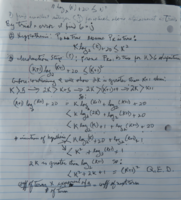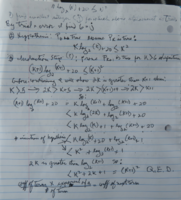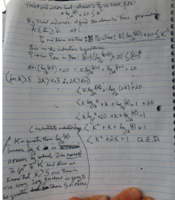No step of your work is false; it is true that \(k > log_2(k)\) for all k. But that wouldn't be true, for example, of \(\log_{1.4}(x)\), for which it would still be true if you require k to be greater than, say, 5. (I know that at the moment only from graphing!) So we can't just say it's obvious.
All that's missing is a proof of that fact that is appropriate at your level (without calculus).
This is another of those cases where, if I were working with you in person, I would be leafing through your book to see whether there is anything they've said that could be useful. For example, it could be that they have previously proved it for all positive integers k by induction (I believe I've done that), in an example or exercise, and you are allowed to use that result. Or they may have proved the equivalent fact that \(2^x > x\) for all x.
Or maybe there is an easier way that works around this step; I'll admit I haven't sat down and tried to work this out completely myself. I'll go do it.





